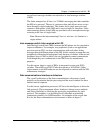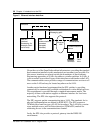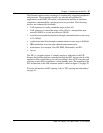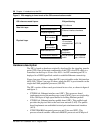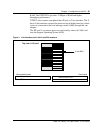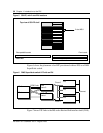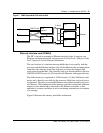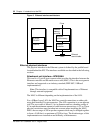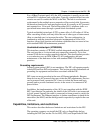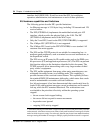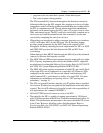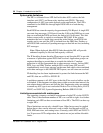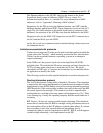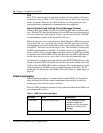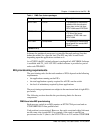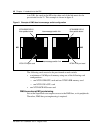
Chapter 1: Introduction to the EIU 33
DMS-100 Family EIU User Guide TELECOM12
For a 10BaseT twisted-pair LAN, the AUI connection is usually on one side
with an RJ-11 telephone jack on the other. Typically, standard office four-wire
circuits are used to connect the MAU to the hub. The hub is an electronic
replacement for the multiple access properties of the coaxial cable. It generates
the broadcast function for each message received. It is usually an AC-powered
unit mounted in a 19-in rack. The hub has either RJ-11 telephone jacks or a
specialized interconnect through a punch-block distribution system.
Typical unshielded twisted-pair (UTP) systems offer a LAN radius of 100 m,
allow cascading of hubs, and may allow the use of other types of interconnect
(fiber or standard coax) to increase the radius. The star configuration, in
combination with the centralized electronic implementation of the LAN
function, allows fault location and isolation capabilities that are more in line
with standard DMS-100 maintenance practices.
Unshielded twisted-pair (NT9X85BA)
This interface contains a UTP MAU and hub integrated onto the paddle board.
The card provides a 4-wire twisted-pair connection externally. Up to four
external LAN devices can be connected to the hub. This development provides
a cost reduction over an OEM 10BaseT LAN configuration and puts
maintenance of the hub more in line with standard DMS-100 maintenance
practices.
Grounding requirements
Isolated system ground (ISG) is not mandatory. The EIU will operate properly
in both ISG and non-ISG environments. This section provides information on
grounding for equipment and facilities associated with the EIU.
ISG issues are most prevalent in the area of Ethernet peripherals. Because
these devices are AC powered, they may violate the ISG requirements. Devices
can be powered from a protected AC source to isolate the frame and logic
grounds and to provide continued service in the event of a commercial AC
power failure.
In addition, the implementation of the AUI is not compliant with the IEEE
802.3 specification. In particular, the shield of the AUI cable is not connected
to logic ground. Instead, the cable is connected to frame ground to satisfy the
ISG requirement. The Ethernet interface is further transformer-isolated in the
transceiver (the MAU) and the shield ground is capacitively coupled to the case
of the unit.
Capabilities, limitations, and restrictions
This section describes the known limitations and restrictions for the EIU.
The operating company can install the EIU only on SuperNode shelves,
including the LPP (but not the 24-slot LPP), FLIS, and SuperNode SE link



